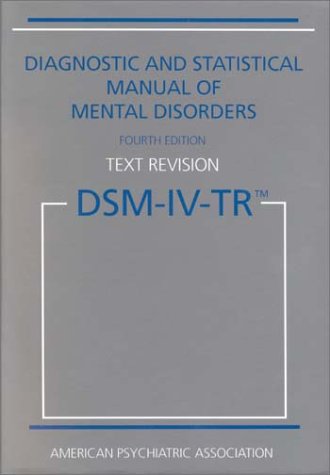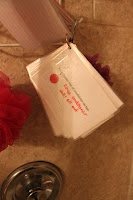Summer is approaching, school is ending and vacations are beginning. I received a wonderful email from a reader regarding vacations. She has been through some struggles in the past and trying to avoid future disaster with her 7 year old child with High-Functioning Autism. There is no way to perfectly prepare for vacations. Changes in routine, transitions and sensory overload are a few of the problems at hand. Each child needs to be met at their level of understanding. The following strategies will be too much information or too abstract of concepts for some and perfect for others. Hopefully what we can emphasize is that we must prepare the individual, make things visually clear and reduce as many stresses as possible. Easier said than done but let's try to tackle the issues.
Questions from our reader:
Recently he's been getting impatient in the car and won't seem to accept the answers we provide... like "we'll be there in 20 minutes." He just keeps asking even though he's very capable of telling time on the clockThe verbal battle of "Are we there yet?" can go on forever! Make the passage of time more visual. Giving him a picture/written (if he's a reader) list of what will take place before you get to the location. If he is watching movies in the car, showing him that he will watch 'Shrek' and 'Toy Story' and then he will arrive at the hotel. Also, for those interested in maps, road signs, etc. use this interest! Let him be the navigator, show him map quest directions and look for exits. Rather than saying "A few more minutes", say "What's next on our directions?".
Unfortunately sleeping problems cannot be left at home! The individual that struggles with the sleeping routine at home will have even more trouble when away. We talked previously about sleep issues and what to do when at home but on the go can be even more challenging. First, prepare for the new environment as much as possible. Many times hotels have great pictures online of the room and it's layout. Reviewing this ahead of time can prepare the individual for this new space. Second, try to recreate your home 'sleep hygiene' or sleep routines as much as possible. Winding down is a process and even more so for those with autism. Lastly, eliminate as much noise and light as possible. Earplugs, sleep masks, calming music and white noise machines can all help to subdue the environment and hopefully lull to sleep.
We live in Orlando and usually just travel to the beaches. We stay in timeshares, sometimes large "hotels", sometimes small condos. Either way, it's super hard for him to settle down and get to sleep at night- even harder than at home. I know this is common with people, but it's just so extreme with him.
Overseas travel can involve an entirely new set of issues! Using 'Social Stories' with pictures to prepare for things like having to take your shoes off at the airport, being around new people, the airplane bathroom, etc can help to alleviate some of the anxiety that may occur. Also, reminding of rules of what TO do rather than what NOT to do. Whisper in my ear or write down in your notebook if you want to say something about what's going on around you. Blurting out that the person in front of them doesn't smell good can sometimes be steered towards writing mom a note. Also, airports are LOUD and full of people. Using something such as 'Noise Cancellation Headphones' can help to subdue the noise around him and make it more manageable. *Tip: these can be bought at construction supply stores for much less; usually around $5 or so.
We occasionally have the opportunity to travel overseas, but I cannot envision doing this. He hates crowds (airports), loud noise, has lots of anxieties, always has trouble getting to sleep, can't tolerate people speaking anything other than English, etc, etc. He also has no concept of what's embarrassing, ex: people watching him fuss about something that makes no sense to typical people. He will loudly blurt out whatever is on his mind, regardless of how it might sound to others. He's often negative and very grumpy, so his comments out in public are usually very unbecoming. Add the stress of travel and it just exacerbates everything.
Waiting is another abstract concept that is meaningless to those on the spectrum, and many of us as well! Having a bag of tricks is important for periods of inactivity. Books, origami, fidgets, or other items of interest are great for having during times that there may be waiting involved. Also, practicing and teaching 'waiting' when we aren't in the moment is important. Starting with short segments of waiting time to prep for the sit down dinner can make it a little more manageable.
Waiting in a restaurant is often not tolerated well. when he's ready to eat he wants it NOW, and when he's done he wants to GO, regardless of whether others are eating or not.
Bring in the visuals! Have a beach checklist of things that he is responsible for. Show him by writing or using pictures of things he needs to bring and have him check each one off as he puts each item into the bag he is carrying. Sometimes individuals don't know where to get started so they don't start at all.
He also has ADHD, so is no help at all as far as getting his stuff together, pulling his own weight, etc. In fact, often his younger brother assists him with some tasks like bringing toys to the pool, to the beach, making sure they have their goggles, etc.
Additional Traveling Strategies:
Sequence of Events
Understanding the 'when' can many times be confusing. Impending events, can be misunderstood as to how far into the future they will occur. Using a calendar can help many individuals see when things will happen and in what order. For this particular child, the entire month was too overwhelming. We took it day by day to show what day it was and pictures of the big events that would occur.
Picture Book
Carol Gray, as mentioned in a previous post, designed amazing strategies to prepare children for a wide range of situations. Using her strategies around Social Stories, helps the student to know what to expect of a situation and better prepare for any changes.
In preparing a child for a trip, some of Carol Gray's 'rules' were put into play. I designed this story to help the child deal with an airplane ride, waiting at an airport, going on a ship and various events that may take place. Although this is not a 'Social Story', I kept it in first person, focused on the positives and did not use terms of absolute such as, "never" and "always". Using pictures specific to this vacation, allowed us to prepare the child for the rooms they might be staying in, what things there would be to do on the ship, etc. These are a few of the pages in the photo book:
Decreasing Stimulation
Traveling can have a lot of over-stimulation involved. Trying to take into account for areas you may need to reduce noise can be especially important. Having music to listen to, noise cancellation headphones or ear plugs can help with these areas.
Daily Activities
Often at the beginning of the trip we give kids a mountain of toys, books, games, etc. and they become bored of everything quickly. Dividing art supplies, games and books into daily bags can help stretch your entertainment and have things to look forward to each day. Crafts and games can be found at dollar stores or dividing up some of your existing games, DVDs, books, etc. can help in know what to do on certain days.
Familiar Items
Making it more comfortable for a child with autism many times means feeling familiar with the environment. On a trip, this doesn't happen easily. Bringing along a favored cup, toy, blanket or even their own pillow and pillow case can ease the transition.
Happy travels this summer!!
-Abby










































